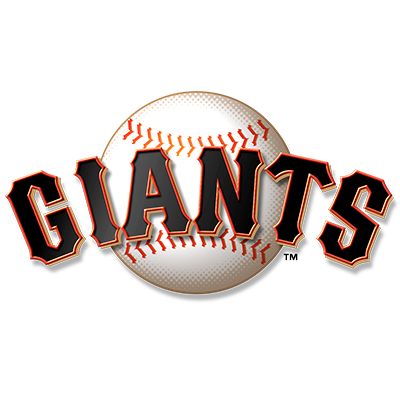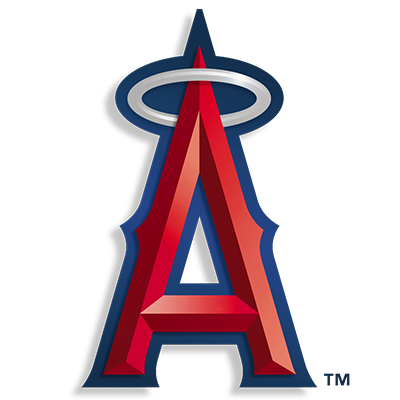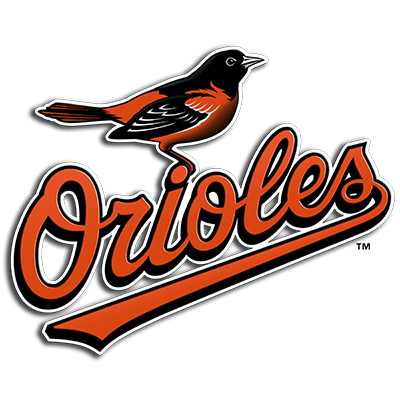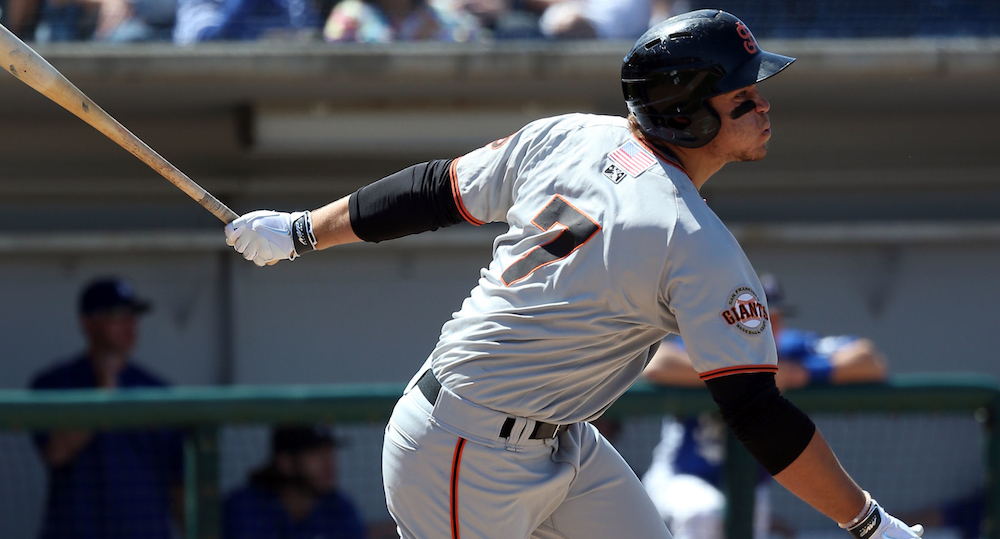Feature Photo: Jonah Arenado, 1B/3B, Giants
Dave DeFreitas, and Ryan Ozella report in with fresh looks at four prospects, including newly-minted San Diego Padre Josh Naylor, Jomar Reyes (3B, Orioles), Jeremy Rhoades (RHP, Angels), and 1B/3B Jonah Arenado and RHP Jose Morel from the Giants’ High A San Jose affiliate.
We’ve also updated our Prospect Video Library with more than 20 new videos. Nick J. Faleris was in South Bend on July 22, and he filed nine videos, including top Cubs prospects Eddy J. Martinez, Donnie Dewees, and P.J. Higgins, while DeFreitas trekked to the Yankees’ Rookie-level Pulaski Yankees in the Appalachian League to get our first look at 2016 first-rounder Blake Rutherford, Dermis Garcia, and three other Yankee prospects. These looks, along with video of former first-round picks including Justus Sheffield (LHP, Indians, ’14), Taylor Ward (C, Angels, ’15), and Josh Naylor (1B, Padres, ’15), are all part of this week’s work from the fields.
Single A Prospect Spotlights
 Josh Naylor, 1B, Padres (Class A Fort Wayne, Midwest League)
Josh Naylor, 1B, Padres (Class A Fort Wayne, Midwest League)
Ht/Wt: 6’0” / 225 B/T: L/L Age: 19 yrs, 0m
Naylor is a big-bodied kid with some hit and power potential at the first base position. The 12th-overall pick by the Marlins in the 2015 MLB draft, he has hit the ground running in his first full season, going straight to the South Atlantic League out of spring training this year after tearing up the GCL last summer to the tune of a .327 AVG, .352 OBP and .771 OPS through 98 ABs. Thus far in 2016 at 19 years old, Naylor has not skipped a beat despite getting less than 100 ABs in rookie ball, and skipping Short-Season A ball all together.
The power has already started to develop, with nine HRs and 24 doubles to go with his ability to make consistent contact (17% strikeout rate). That level of bat control is likely Naylor’s best attribute as a player, and also what pushed the Marlins past other teams that were pursuing the hard-throwing Andrew Cashner (RHP, Marlins…as of last night!). Naylor played his high school ball in Ontario, Canada and is the highest Canadian draft pick in MLB history. Considering how little they get to play up there compared to more southern climates, it makes Naylor’s present level with the bat that much more impressive.
Naylor is not without his flaws, however. In 99 ABs vs. lefties, he is hitting only .212 with 21 punch-outs and a .628 OPS. Some of this I attribute directly to his limited game ABs, and lack of opportunity to really get to see much left-handed pitching. However, Naylor also has some pronounced hip travel that sees him get out heavy on the front side, and while he does do a good job of keeping his hands back, the barrel tends to drag. He still covers the zone well and has very good hand-eye coordination, but he seems limited by his mechanics. He ends up ‘serving’ the ball to center and left field, as he can’t get extended enough to really drive the ball and take full advantage of his strength.
The body looks soft, and he has the potential to get big if he doesn’t take care of it. He will likely always have below-average range at first base, and his feet can get heavy at times causing his hands to stiffen up. With 11 errors through 81 games at first base, it has not been a great defensive showing thus far. However, I again give him the benefit of the doubt here due to the lack of reps he’s gotten throughout his amateur career. He is a much better athlete than the body lets on and just barely has a single full season under his belt. He is a smart base runner and has shown that he can pick his spots (10 stolen bases in 13 attempts this season), so he is not a base clogger, and he has awareness for his age that will serve him well as he advances.
Ultimately, I think the Padres did well in this deal. Cashner, while he has great stuff, has not fared well recently and is a back of the rotation arm that gives up a lot of contact. In Naylor, the Padres got a kid who isn’t yet 20 years old who is showing advanced bat control. I do wonder how he will adjust with his mechanics vs. the better pitching at the upper levels, but he will benefit from the pro level instruction and consistency of play. Now that he is in San Diego he is going to have to stay at first base, as I don’t think he will have the range for even a corner-outfield spot. I’ve heard some people compare him to Billy Butler (DH/1B, A’s), but I think he is probably a better athlete than Butler was at this age with the potential to hit for a bit more power. – Dave DeFreitas
 Jonah Arenado, 1B/3B, Giants (High A San Jose, California League)
Jonah Arenado, 1B/3B, Giants (High A San Jose, California League)
Ht/Wt: 6’4” / 230 B/T: R/R Age: 21 yrs, 5m
Arenado, the younger brother of Colorado Rockies All-Star third baseman Nolan, was drafted out of high school by the Giants in the 16th round in the 2013 MLB Draft, and he’s steadily moved up the organization each year. Coming to the minors at 18 years old has allowed Arenado to focus on building himself up, and it shows. He’s got a strong, developed build allowing him to play both corner infield positions while showing some strength in his hands and lower half.
Offensively, Arenado has shown some pop from the right side, and he currently leads the team with 11 home runs on the season. He holds his hands at the shoulder and sort of “sits” when loading, with some bat wiggle. His swing has some uppercut to it, and he looks to get his hands going quickly to pull pitches to the left side of the field. While this approach will let him crush mistakes and slower pitches up in the zone, there are times where his hands drop and he gets under pitches leading to pop-ups. He has a tendency to swing through pitches inside the zone (21% strikeout rate in 2016), especially on off-speed pitches to the outer half of the plate, and walks are an unusual outcome for him (just 6% for his career). Arenado’s swing showcases some pull-heavy pop, but this approach will also lead to him pulling his front shoulder open and hooking pitches on the outer half – or missing them all together. Good pitchers have been able to throw advanced sequences at him, getting him fishing.
His legs aren’t going to help him get on base or create much when on base as he profiles as a well-below average runner (4.5 HP-to-1B), so he’ll need to continue to work on his swing and utilize his power to help him have value.
Defensively, Arenado has played both third and first base in his career, and he has some pluses and minuses at both positions. His arm profiles to be a tick-above average at either position, and he’s shown soft hands with an ability to catch the ball well. At third, he doesn’t show the quickest reactions and tends to get flat-footed moving to either side of him. I’ve also seen him let his elbow drop on throws across the infield and this has led to poor accuracy, especially when moving to his glove side. At first, these issues don’t become as much of an issue since he can stay back on the infield, and he doesn’t have to move laterally as much. His arm allows him to make throws that most other first baseman can’t, and I think he will be better as he learns to handle himself around the bag. He looks more natural and confident at first base and has shown soft hands by saving infield throws in the dirt.
Overall, Arenado has continued to improve his stats lines at each level and he’ll need to be tested against high-quality pitching to see how good he can be. The swing and walk rates won’t help him get on base much, and that could hold him back, so he will need to keep slugging to reach his true potential. I can see him being a role player who can play both corner positions and be a power bat off the bench. – Ryan Ozella
 Jose Morel, RHP, Giants (High A San Jose, California League)
Jose Morel, RHP, Giants (High A San Jose, California League)
Ht/Wt: 6’2”/ 190 B/T: R/R Age: 22 yrs, 10m
Morel was signed by the Giants in 2012 out of the Dominican Republic, and has spent his previous four years developing at Rookie ball before taking a big step up to High A San Jose this year. The years developing have produced a mature body and solid build, with broad shoulders and some good strength in the lower half.
Morel works with a simple delivery that has a side step/leg kick while keeping his hands close to his chest. The arm comes out in a whip 3/4’s release point that has some looseness , and not a lot of effort. He works across his body, and the arm angle and release point contribute to his strengths and his weaknesses. He works mainly two pitches, a Fastball that sits 87-to-89 mph (T92) and a Slider sitting 76-to-79 (T80) with both pitches being fringy offerings, and with command being poor. The fastball has some arm-side sink and can get some tail in its two-seam action. When Morel’s mechanics are in sync the pitch is rarely straight, and he can get it down in the zone to keep it off the barrel and getting weak contact. The problem is he has trouble controlling the pitch. When he throws to the arm side he opens up his front shoulder making the pitch take off without much of an idea for where it’s going. This inconsistency in driving down the hill and finishing will lead to extended bouts of control issues.
The slider has an exaggerated break that when on will get hitters out front and chasing the pitch off their front foot. When Morel’s mechanics are off, he will get under the pitch making it sweepy and loose in it’s break. The pitch works its best when he does find command of his good sinking 2-seam fastball, as it breaks away from RHH’s and under the swing of LHH’s.
Morel moved into the starting rotation in late June, but he profiles better out of the bullpen than he does as a starter. Since moving into the starting role, Morel has walked as many batters in 18 innings as he did in the 35 innings he worked prior from the bullpen (nine) while also hitting five guys and allowing five home runs. Out of the bullpen, his stuff should improve if he could be a max-effort guy, bumping his fastball velocity while allowing the slider to keep its same velocity and shape. Overall, Morel needs to significantly improve his control for him to be successful. Too often he’s working from behind in the count, and at times seems lackadaisical on the mound and with his mechanics. He’s still young, and has a chance to continue to develop, but to me he’s a Quad-A type player at best. – Ryan Ozella
 Jeremy Rhoades, RHP, Angels (High A Inland Empire, California League)
Jeremy Rhoades, RHP, Angels (High A Inland Empire, California League)
Ht/Wt: 6’4” / 225 B/T: R/R Age: 23 yrs, 6m
Rhoades recently moved into the Angels’ Top 30 in MLB’s 2016 Mid-Season Prospect Watch and he showed off a big, maturely built body in my view against the San Jose Giants. He’s built with a strong lower half and has a compact arm action where the ball comes out of a big 3/4’s release point right around his ear. His delivery is simple and repeatable, with a side step that leads to him lifting his front leg high and his hands slightly at the same time. Though he does a decent job of repeating his delivery, there are times where he will rush his mechanics, causing him to fall off the hill to his glove side. The lifting of his hands allows him to get his long arm out smoothly, though it can come out in a rather short action which was surprising for a guy with his large build.
Rhoades worked his fastball (89-to-91 mph, T93) heavy early in the game and attacked the zone with it to both sides of the plate. It looked like he had no problem pitching to contact and letting his infield do their work behind him. In the first couple innings the pitch was heavy, and spotted to the inner half, causing weak contact ground balls while also flashing an ability to get under the hands of RHH’s. When going to the glove side, the pitch had some cut with life at the plate. This changed in the third inning when the pitch lost its heaviness and he lost some command, flattening out and causing the pitch to tail back over the middle and get hit hard. The rough inning and loss of control seemed to fluster him, but it also helped pump up the velo when putting away hitters with his fastball.
Rhoades has a fringy slider (83-to-85, T87) that is compact with hard spin. He showed some downward ¾’s break in it but he was inconsistent with the control and the spin, having it back up when not finishing through it. Rhoades changeup (82-to-85, T86) was his best off-speed pitch as it had some sink to the arm side out of a deceptive arm speed that mirrored the fastball out of the hand. It seemed like Rhoades had confidence in the pitch, throwing it early the second time through the lineup, to hitters on both sides of the plate, and when ahead in the count. The pitch, like others in the outing, was not controlled much, and would sink into the heart of the plate at times.
Nothing Rhoades throws is really overpowering, and he definitely lacks a go-to out pitch. His aggressiveness in the zone will get him into trouble when his command isn’t on. That aggressiveness will also keep his defenders active and if they aren’t doing their job, it could make for a long night for Rhoades. His numbers this season (.269 BAA, 1.39 WHIP, 73 K’s/37 BB’s over 110 IP) seems to point to a pitcher who’s stuff isn’t set up to go five-plus innings. In the look I had his stuff was good enough to get hitter outs for a couple of innings, but a second or third time through the lineup, and hitters start to track it better. Because of that, Rhoades best profiles to a bullpen arm where he can work his fastball at a higher velo and limit the looks against him. – Ryan Ozella
 Jomar Reyes, 3B, Orioles (High A Frederick, Carolina League)
Jomar Reyes, 3B, Orioles (High A Frederick, Carolina League)
Ht/Wt: 6’3” / 220 B/T: R/R Age: 19 yrs, 5m
Reyes entered the 2016 season as the Orioles #4 prospect after an impressive 2015 campaign that saw him hit 27 doubles, four triples and five bombs in 305 ABs in the South Atlantic League. 2016 has been a bit of a different story for Reyes after starting the season at High A Frederick. He is currently struggling along at a .227 clip and has seen his OPS drop to .620 from .774. The plus raw power is still there and he boasts athletic actions for having such a large frame. He has some baby fat on the frame and I think he may still be finding his coordination.
He has a good deal of hip travel in his swing and his head tends to move a lot while the pitch is traveling. His weight ends up out front, and the bat drags a bit causing him to get beat inside with average velocity. Some of what he showed this past week I have to assume is him pressing and trying to do too much after a disappointing first half. He is, after all, still just 19 years old. His numbers are down and he is not doing as much damage, however it’s not like he is suddenly swinging and missing at much higher rate. Through only eight more plate appearances than he had in all of 2015, he has two fewer strikeouts and one more walk. So I think he is seeing the ball, but not positioning himself to get the barrel out front and allow his power to translate.
The breaking balls tend to get better the higher the level and his lean out over the plate may be an attempt to better cover the outer third of the plate…which in turn makes him vulnerable to the fastball in. In four ABs vs. Carolina on 7/26, he had his bat broken in two of those ABs by average velocity running in on his hands. I did not get to see him last year, but my guess would be that he probably had some similar issues with the mechanics last year as well, but he had a larger margin for error at the lower level.
Defensively, Reyes was not overwhelming. Yes, he moves well for his size and is athletic, but the feet tend to get heavy and he requires a large amount of effort to catch and throw on the move. He has at least an average arm, but gets very deliberate and by aiming the routine throws, he sees his accuracy suffer. The hands look good – he is a strong kid and secures the ball – so my guess would be that the majority of his 16 errors this year are of the throwing variety. I think there is room for him to improve as he finds some coordination, and as he matures physically the mobility should improve. That said, my impression is still that he will have to move off of third base at some point in the not too distant future.
Being trade season and all, it’s only natural to wonder if he could get moved in the Orioles’ attempt to make additions to their pitching staff. However, I would have to think Reyes’ trade value is not what it was in the spring. Staying in High A all season is a good sign that Baltimore is still quite high on this kid and believes that he will make the adjustments, so even with his struggles I wouldn’t expect them to sell low. – Dave DeFreitas
New Content at 2080
Reports
Multiple new reports now up in our fresh Report Library.
Video
25+ new prospect videos since last week’s minor league update! All found here.
News and Notes
- Top Indians prospects Clint Frazier and Bradley Zimmer, who had both spent the season roaming the outfield for Double-A Akron, were bumped to Triple-A Columbus on July 24, with Frazier taking some reps in left field for some added versatility.
- Mauricio Dubon (SS, Red Sox, Double-A Portland, Eastern League), has caught fire for the Sea Dogs as he ends his first month at the level, bringing his Double-A slash line up to .317/.352/.450 through July 29.
- David Dahl (OF, Rockies) made short work of his Triple-A promotion, playing just 16 games and ripping .484 with a 1.487 OPS before getting called up to the Colorado Rockies on July 25. He had spent the majority of 2016 at Double-A Hartford, hitting .278 with 13 HRs and 45 RBIs over his first 76 games.


